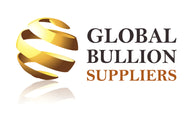Three cheers if you know what the US Department of Strategy, Policy, and Plans does. And no, if you worked there, it doesn’t count. Most of us would have a hard time identifying the daily functions of the Canadian Revenue Service. But what does the Royal Canadian Mint do? On one hand - if you are not a collector or precious metals investor - the prima facie answer is printing money.
Printing money, however, is the responsibility of the Canadian Bank Note Company (CBNC). A former subsidiary of the American Bank Note Company, the CBNC has been printing Canadian currency since 1897. Moreover, it has been making passports for Caribbean Community countries since 2014.
But what does the Royal Canadian Mint do related to proper money? Well, it mints circulating coins in addition to commemorative and bullion products. The Mint has done so since 1908, when it took over from England. Interestingly, the Royal Canadian Mint operates as a 'for-profit' company in the public's interest.
Year after year, the Mint's is a cash cow for the Government. As of the 39 weeks ended Sep 30th, 2017, it earned some CAD $29 million before taxes. The CBC explains that unfortunately, some Mint ventures such as the $20 for $20 coins, have been tremendous money-losers. If you look at the numbers carefully at the time of writing, the Mint has a profit margin of 2.25%. While that is significantly more than most precious metals wholesalers, collectible margins are normally much higher.
What does the Royal Canadian Mint do, day-to-day?
For the uninitiated, below is a quick rundown of a few key functions played by the Mint in the Canadian economy.
1. The Royal Canadian Mint makes Coins.
All the government issued coinage in your pocket comes from Mint branches in either Winnipeg or Ottawa branch of the Mint. Funny enough, many other currencies are also produced at the Mint. According to this Globe and Mail article, the production of foreign currency reached over CAD $61 million in revenue for the Mint.
Producing coinage for circulation is theoretically the Mint's primary responsibility. It is the only body registered to do so. With Parliamentary authorization - as in 2012 when it stopped producing pennies - the Mint can decide to change the type of coins they produce.
2. What does the Royal Canadian Mint do in Designs and Manufacturing?
The primary source of revenue is in the production and sale of original and rare precious metal coins and medals to registered dealers. The Mint has a long line of popular ‘Maple Leaf’ coins which come in 99.99% fine silver and 99.999% fine gold. The RCM Gold and Silver Maples Leaf coins in particular are known and coveted worldwide, but the Mint also produces a variety of different designs each year in gold, silver, platinum, and palladium.
3. What does the Royal Canadian Mint do in Refining?
Getting precious metals to a pure state takes quite a bit of work. The Mint has been refining since 1913 and is a EICC-GeSI Conflict Free Smelter. Since 2005, when the Mint added a state-oft-the-art refinery, it has been particularly well-placed to do this work. It is also an ISO 9001 and COMEX and LBMA good-delivery refiner.
4. What does the Royal Canadian Mint do in Digital Currency?
In 2012 the Mint got in on cryptocurrency. They produced their very own "MintChip" digital currency. The anonymous transactions are all backed by the government and apply to a host of different currencies. Interestingly, this business was not very profitable and was sold to the privately-held nanoPay in 2016.
5. The Mint Does Not Sell Directly to the Public
We know that the Mint runs for-profit, and that generally it does not run massive deficits each year and get propped up by taxpayers money. The Mint's mandate is to operate in a commercial manner and cover as much of their costs as possible, ideally earning a profit. Why, then, does the Mint does not sell directly to the public? The answer is that they do, sometimes. You can shop through all of their collectible coins online or at a post office.
What does the Royal Canadian Mint do that makes it the most money?
Bullion products all day. In fact over 76% of the Mint's total revenue in 2016 came from international bullion sales. Yet, as stated directly on their FAQ page for buying bullion, the Mint sells “only to distributors who have the infrastructure to sell and buy back to and from the public and manage sales to individual dealers in North America and around the globe.”
That means if you are looking to buy the Mint's precious metals products most qualified precious metals dealers will have them. For example, Global Bullion offers a selection of Royal Canadian Mint bullion.

